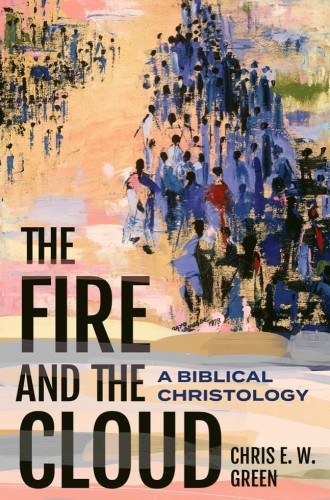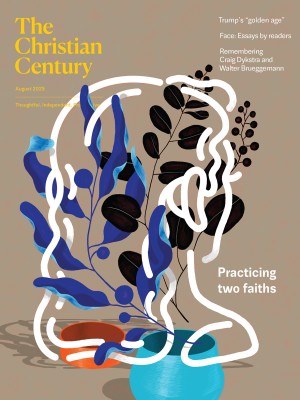Christology without supersessionism
Chris Green invites Christians to a humbler reading of scripture—one that listens, learns, and refuses to displace Israel’s voice.

The Fire and the Cloud
A Biblical Christology
In his latest book, theologian Chris Green addresses an issue that is long overdue: the articulation of a non-supersessionist Christology. The author, who teaches at Southeastern University, calls supersessionism “a particularly damaging doctrine.” Indeed, he even identifies supersessionism as a heresy, because Christians’ forgetfulness of Israel’s primacy in God’s purpose is at the very root of virtually all predicaments in church history. He states that “supersessionism has been a flaw in the design of Christian theology” and that “doing theology is always an act of repentance.”
Much is at stake in articulating a non-supersessionist Christology. Rosemary Ruether famously—or, according to numerous Christians, infamously—asserted that “anti-Judaism developed as the left hand of Christology.” From early on, Christians believed that confessing Jesus as Christ necessarily entails a repudiation of Jewish interpretations of the scriptures, a notion largely carried on through 2,000 years of Christology. In contrast, Green believes that a non-supersessionist Christology—one that avoids simplistic dichotomies between true and false scriptural readings—is possible. He solemnly asserts that he has “no designs on convincing Jews that they have been wrong about Jesus all along” and, using Herbert Basser’s horticultural image, states that he wants to refrain from “plant[ing] Christian trees in Jewish soil.”
Read our latest issue or browse back issues.
Green’s book is spiced with numerous quotations. The first two are by Abraham Joshua Heschel and Dorothee Sölle, who emphasize that a Christianity without the Hebrew Bible loses its authenticity, resulting in Jesus becoming a sentimental figure. For this reason, Green is eager both to root Christology in the Hebrew Bible and to avoid supersessionist readings. He is in constant dialogue with biblical texts, church fathers (e.g., Augustine, Ephrem the Syrian, and Origen), and contemporary writers (e.g., Robert Alter, Walter Brueggemann, Robert Jenson, R. Kendall Soulen, Michael Wyschogrod, Yair Zakovitch, and Avivah Gottlieb Zornberg). Green moves with ease and joy in the landscape of Jewish and Christian writers, discerning new and thought-provoking readings while also issuing warnings about old and prejudiced interpretations.
The book’s main motif is peregrination: Green begins with Cain’s exile in Genesis and ends with the book of Ruth. In total, there are nine narratives of migration and relocation: exile, pilgrimage, settlement, exodus, wandering, establishment, scattering, captivity, and homecoming. In addition to dealing with the forced migration of the wandering Jew legend in antisemitic discourse, he discusses the itinerancy of the Galilean protagonist in the gospels and the homelessness of God.
This emphasis on peregrination evokes a series of questions that deserve our attention. Arguably Green’s focus on the geographical wanderings of the biblical characters metamorphoses into an interest in a chronological trajectory that bends toward Jesus of Nazareth. This is perhaps inevitable for a Christian reading of the Hebrew Bible, but it ought to be argued for and not only assumed, especially in a work that seeks to present a non-supersessionist Christology. When Christians read Israel’s scriptures in this way, what are the consequences for their understanding of the traditional Jewish readings of these texts, texts that the Jewish people rightfully consider their own? How is Green’s agenda to outline a non-supersessionist Christology related to his programmatic statement that the Bible ultimately speaks only of Jesus: “Clearly, we are bound by our faith to trust that the Old Testament not only speaks in some sense about Jesus but in the deepest sense speaks only about him”?
Green asserts that too much Christ-centered exegesis of the Hebrew Bible is effectively Marcionite, especially when presenting Jesus in more or less direct opposition to the Old Testament God and pre-Christian ethics. But Marcion was branded as a heretic—and the influential alternatives to Marcion’s hermeneutics that emerged were consistently supersessionist readings of Israel’s scriptures. Christian theology throughout the ages has often oscillated dualistically between the dogmatics of Marcion of Sinope and his opponents (such as Melito of Sardis) who portray the Jews as deluded because they do not recognize the true identity of Jesus of Nazareth, although he is allegedly predicted in Israel’s scriptures. The more that Christians claim Jesus is the essential message of Israel’s scriptures, the more astounding they find Israel’s overabundance of alternative readings—and the more inescapable it seems to be for Christians to reproach Jews for not reading the Jewish scriptures as Christians read them.
Homer’s Odysseus, when sailing the Mediterranean Sea, sought to avoid Scylla and Charybdis. How can Christian theology, in its peregrinations, circumvent Sinope and Sardis? What are the options for those who seek to avoid both Marcion’s refuting the scriptures (the holy texts that Jesus and his disciples knew as their own) and Melito’s reducing them to Christ-witness only? What the two men from Sinope and Sardis have in common is that both of them depreciate the Jewish tradition: Marcion by denying the validity and value of the Jewish scriptures, and Melito by insisting that they be deciphered with a hermeneutical key to which only Christians have access.
One theological route that could be explored further is the implications of Logos Christology for the Jewish-Christian dialogue: Jesus the incarnate Word as the center of Christian adoration, similar to the Torah as the center of Jewish worship, but never in the sense that one form of revelation is better than the other. Another, related line of thought is to describe a bifocal hermeneutics that not only recognizes but also celebrates the validity and value of Jewish scriptural readings, including those which offer alternatives to Christ-centered interpretations.
Third, similar to Franz Rosenzweig’s classic The Star of Redemption, Green’s book is arranged into three parts. What would the results be if The Fire and the Cloud were even more Rosenzweigean? An alternative to the emphasis on chronology with Christology as the historical climax is Rosenzweig’s idea that the liturgical calendar celebrates creation, revelation, and redemption—hence, more of a cyclical and liturgical prism than a chronological trajectory through history.
A fourth and final suggestion is to further revisit Ruth, who in the Jewish tradition is the primordial typos for the proselyte, and whose statement “Where you go, I will go; where you lodge, I will lodge; your people shall be my people and your God my God” (1:16) is a confession of faith by a person who wants to be included in the Jewish people. Her creed is one of solidarity with the Jewish people; it expresses her wish to be included without any other form of Judaism being excluded.
Green’s book is stimulating not only because of the answers it gives, but also because of the many questions it triggers. The lingering question it left me with is whether the absence of explicit supersessionism is sufficient. Or does one have to describe even more what is disproved? If Jesus is proclaimed as the truest meaning of Israel’s scriptures, is Judaism poorer for not integrating this belief? Or are the Christ followers’ devotion, life, and ministry specifically the gentile way to worship the God of Israel? John Dominic Crossan once posed two questions: Why did Christianity arrive? And why did Judaism survive? Green generously explores the first, but he could probably have said more about the second.
Despite this book’s impressive size, some readers may sense that it is an hors d’oeuvre, a tasty appetizer that invites readers to continue exploring an intriguing topic: a non-supersessionist Christology that does not depict Judaism as falling on the wrong side in every possible sense—historically, hermeneutically, theologically, and christologically—but rather sees and appreciates Judaism as the tradition that informed and formed Jesus of Nazareth, who on Shabbat attended the synagogue service “as was his custom” (Luke 4:16), not only in order to teach but also to learn from Israel’s scriptures. That, too, is a christological statement.






